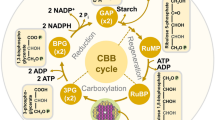Abstract
Parameters for an equation representing crop development from planting to emergence, jointing, heading, soft dough and hard dough stages were obtained by iterative regression analysis of five years of temperature, photoperiod, and Olli barley phenological data from nine Canadian locations. The triquadratic model previously developed and applied to Marquis wheat by Robertson was used. The necessity of using the same threshold temperature for both the maximum and the minimum daily temperature causes analysis difficulties and makes the model less realistic. In spite of the model's limitations, the derived parameters are probably quite useful when applied under environmental conditions similar to those represented in the experiment. Under such conditions, the model seems to perform about as well for barley as it did for wheat, in spite of the considerable differences in the development behaviour of the two crops, especially barley's faster rate of development toward maturity.
Zusammenfassung
Durch wiederholte Regressionsanalyse der Temperature über 5 Jahre, der Photoperiode und der phänologischen Daten für Olli-Gerste an 9 kanadischen Standorten wurden die Parameter für eine Gleichung gewonnen, die das Getreidewachstum von der Saat bis zum Schösslingetreiben, Ährenschieben, und den Stadien der Milchreife und Hartreife wiedergibt. Das triquadratische Modell hat Robertson kürzlich entwickelt und auf Marquis-Weizen angewandt. Die Notwendigkeit, die gleiche Grenztemperatur sowohl für die tägliche Maximumals auch Minimumtemperatur anzuwenden, erschwert die Analyse und macht das Modell weniger wirklichkeitsnah. Trotz dieser Begrenzungen des Modells sind die abgeleiteten Parameter nützlich, wenn sie unter Umweltbedingungen angewendet werden, die denen im Experiment ähneln. Unter solchen Bedingungen scheint das Modell für Gerste ebenso gut zu sein wie für Weizen, trotz der erheblichen Unterschiede im Entwicklungsverhalten der beiden Getreidearten.
Resume
Au moyen d'une analyse par régression itérative on a calculé les poids respectifs de la température et de la photopériode dans une équation représentant le développement de l'orge Olli. Cette équation est applicable aux phases séparant le semis de la levée, la levée du tallage, le tallage de l'épiaison, l'épiaison du stade laiteux et le stade laiteux de la maturité. Pour ce faire, on a utilisé des valeurs tant météorologiques que phénologiques provenant de neuf endroits du Canada et recueillies durant cinq années. On a utilisé le modèle triquadratique développé précédemment par Robertson et qu'il a appliqué au blé Marquis. La nécessité d'utiliser le même seuil de température aussi bien pour le maximum que pour le minimum journaliers cause des difficultés d'analyse et rend le modèle moins réaliste. Malgré les limites du modèle lui-même, les paramètres qui en découlent sont probablement directement utilisables dans des conditions ambiantes semblables à celles ayant régné lors de l'acquisition des valeurs de base. Dans ce cas, le modèle semble aussi bien applicable à l'orge qu'il l'était au blé, bien que les deux cultures se distinguent nettement l'une de l'autre quant à leurs impératifs de développement.
Similar content being viewed by others
References
BASSETT, I.J., HOLMES, R.M. and MACKAY, K.H. (1961): Phenology of several plant species at Ottawa, Ontario and an examination of the influence of air temperatures. Canad. J. Plant Sci., 41: 643–652.
PRIMAULT, B. (1969): D'une application pratique des indices biométéorologiques. Agric. Meteor., 6: 71–96.
ROBERTSON, G.W. (1968): A biometeorological time scale for a cereal crop involving day and night temperatures and photoperiod. Int. J. Biometeor., 12: 191–223.
UNSTEAD, J.F. (1912): The climatic limits of wheat cultivation, with special reference to North America. Geogr. J., 39: 347–366, 421–446.
WILLIAMS, G.D.V. (1971): Physical resources for barley production on the Canadian Great Plains. Unpublished M.A. Thesis, Geography Department, Carleton University, Ottawa, 228 pp.
Author information
Authors and Affiliations
Additional information
Contribution No 783 of the Chemistry and Biology Research Institute.
Rights and permissions
About this article
Cite this article
Williams, G.D.V. Deriving a biophotothermal time scale for barley. Int J Biometeorol 18, 57–69 (1974). https://doi.org/10.1007/BF01450665
Received:
Issue Date:
DOI: https://doi.org/10.1007/BF01450665




